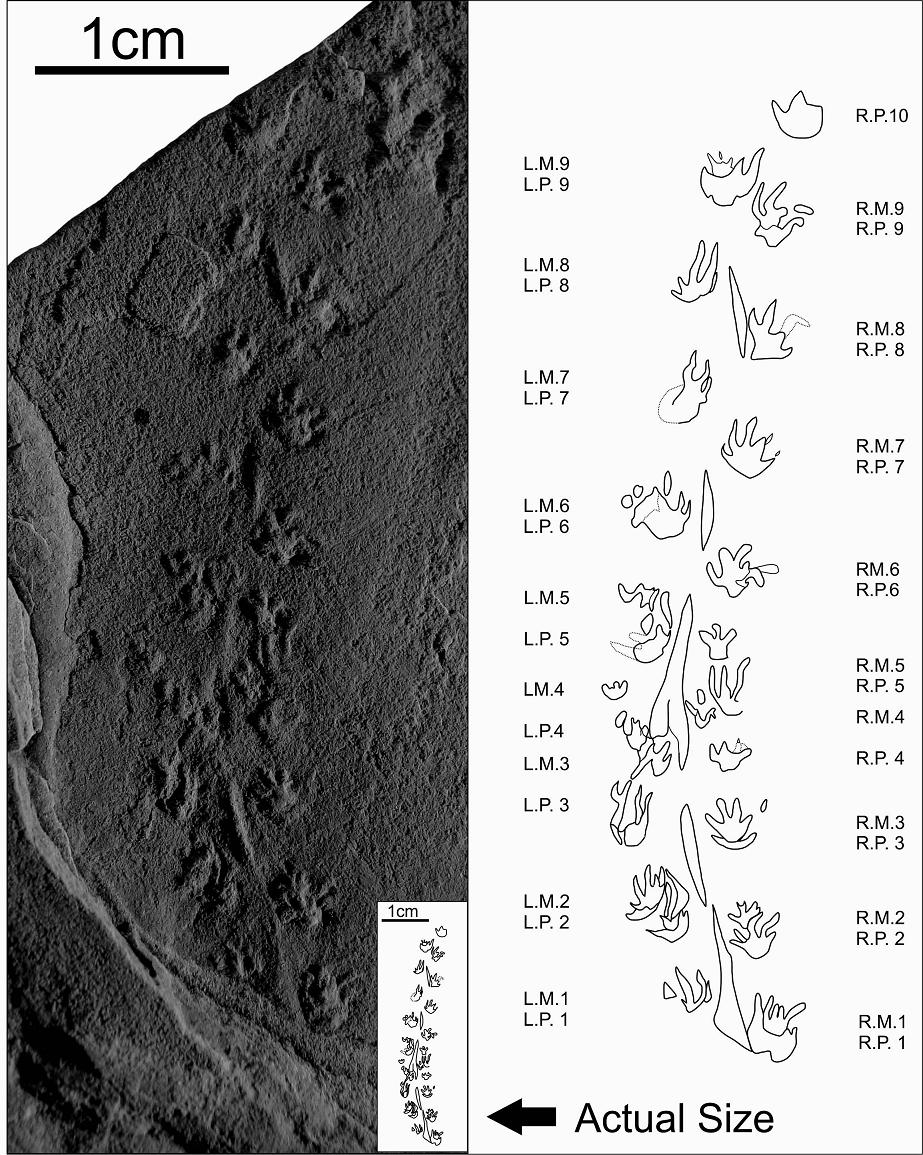The footprints were found at Joggins Fossil Cliffs. A fossil specimen of the ichnogenus Batrachichnus salamandroides was collected by local amateur paleontologist Gloria Melanson, daughter of Don Reid, the famed Keeper of the Joggins Cliffs, while walking the Joggins beach. Joggins Fossil Cliffs is a UNESCO World Heritage Site.
The footprints belonged to a small amphibian which would have roamed the Earth 315 million years ago, a creature not unlike a salamander. The fossil record at Joggins is most famous for its diverse skeletal record of small tetrapods, dominated by an array of small, primitive amphibians (temnospondyls and microsaurs), and the oldest known reptile, Hylonomus lyelli, entombed within once-hollow fossil tree stumps.
Small trackways of these animals at Joggins are common, but none so small as the one discovered recently. The 48-mm-long trackway preserves approximately 30 footprints with the front feet measuring 1.6 mm long and back feet measuring 2.4 mm long.
“This was one of the most exciting finds I have ever made and I am very pleased that, along with my colleagues, we are able to share it with the world. Every big fossil find is by chance; it's all about being lucky and recognizing what you’re looking at. When I saw the very small tail and toes I knew we had something special. I never thought it would be the world’s smallest,” said Melanson.

CLICK FOR LARGER SIZE. Batrachichnus salamandroides trackway. Credit: Gloria Melanson
Study of the footprints by paleontologists at Saint Mary's University (student Matt Stimson) and the New Mexico Museum of Natural History (Dr. Spencer Lucas) has revealed the trace maker was a juvenile amphibian, similar to a salamander (temnospondyl or microsaur) with an estimated body length of only 8 mm from snout to tail.
Further examination shows the animal began in a walk and later changed direction as it began to run. Speculation could be made that these are some of the juvenile’s first footsteps on land after transforming from a tadpole stage that hatched in a local pond. The change in direction and speed may be interpreted as the animal either becoming startled by a larger predator, or perhaps while hunting some small insects, itself.
Melanson’s fossil is on display at the Joggins Fossil Centre at the Joggins Fossil Cliffs. The fossil and the secrets it reveals about ancient juvenile life in the Coal Age 315 million years ago in Nova Scotiais, is described in a paper by Stimson, Lucas and Melanson in Ichnos.




Comments